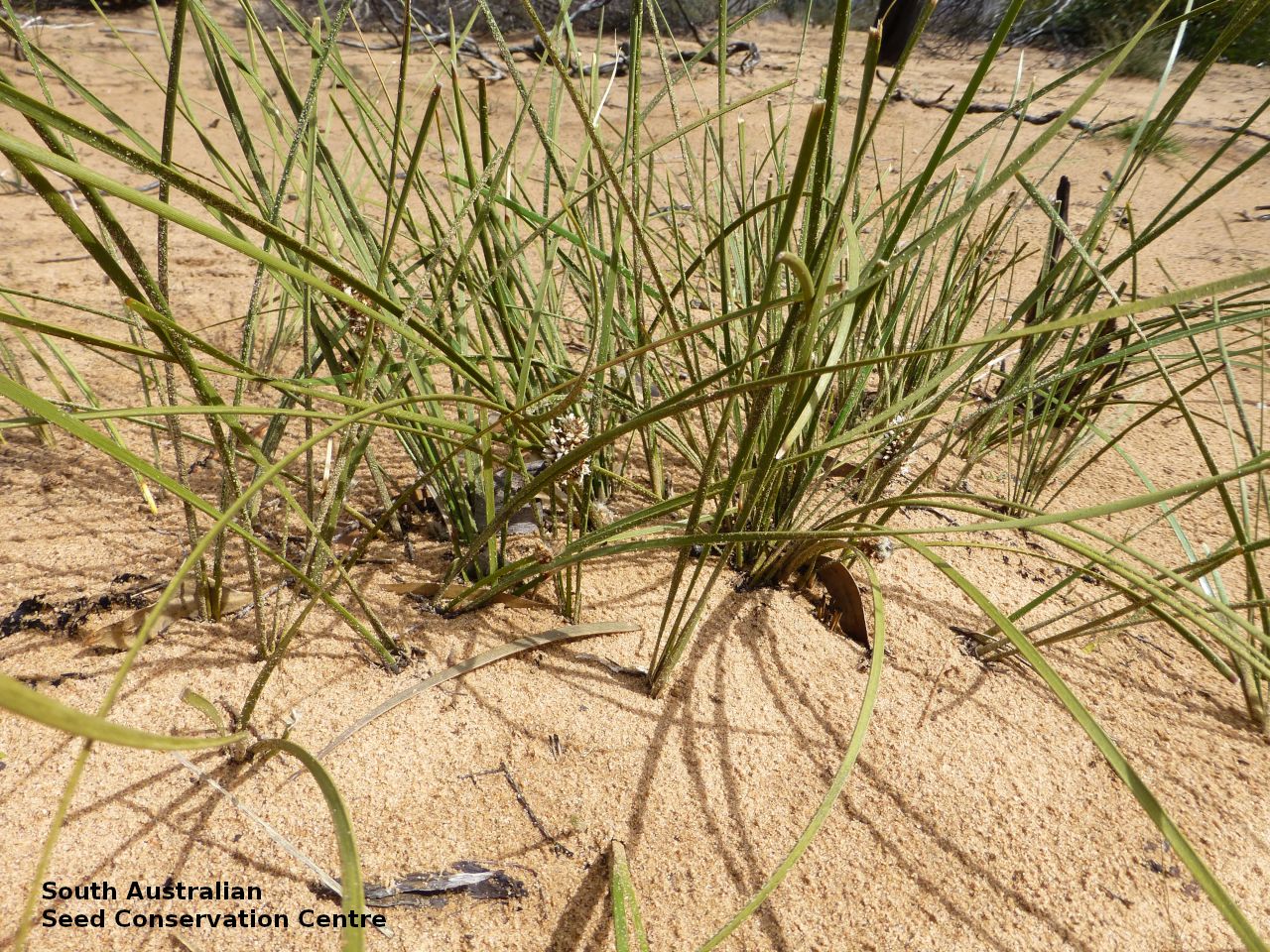

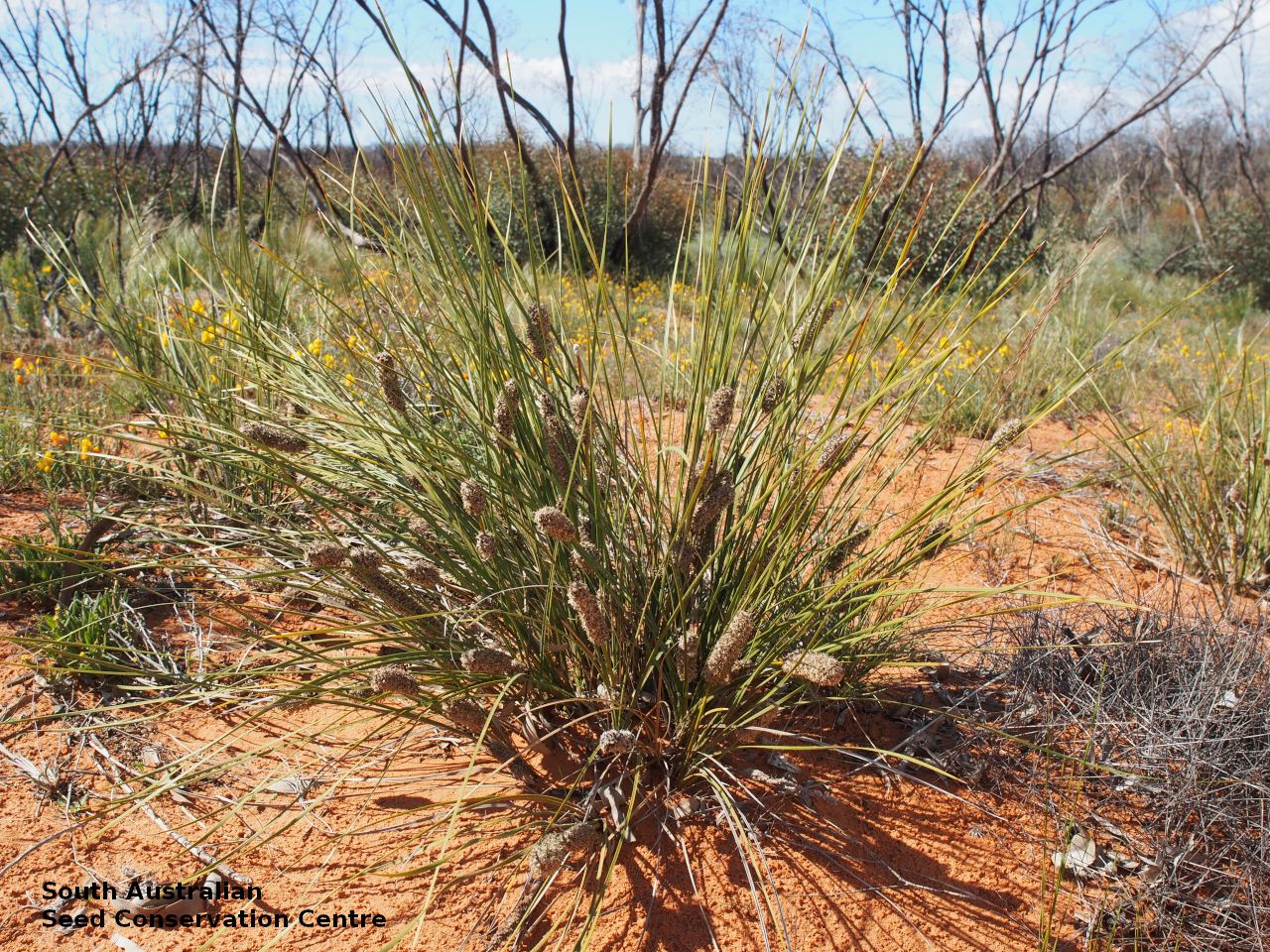






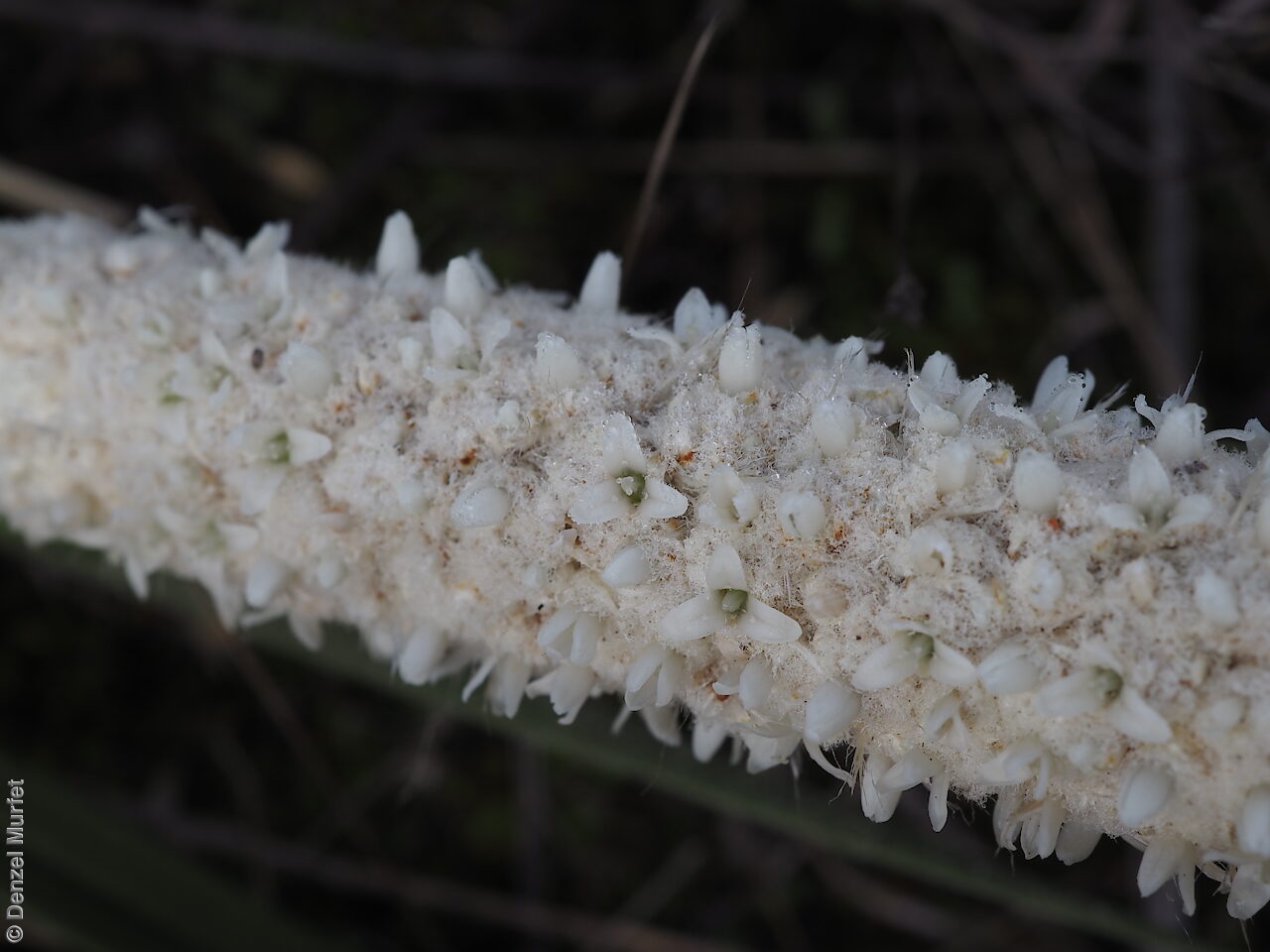

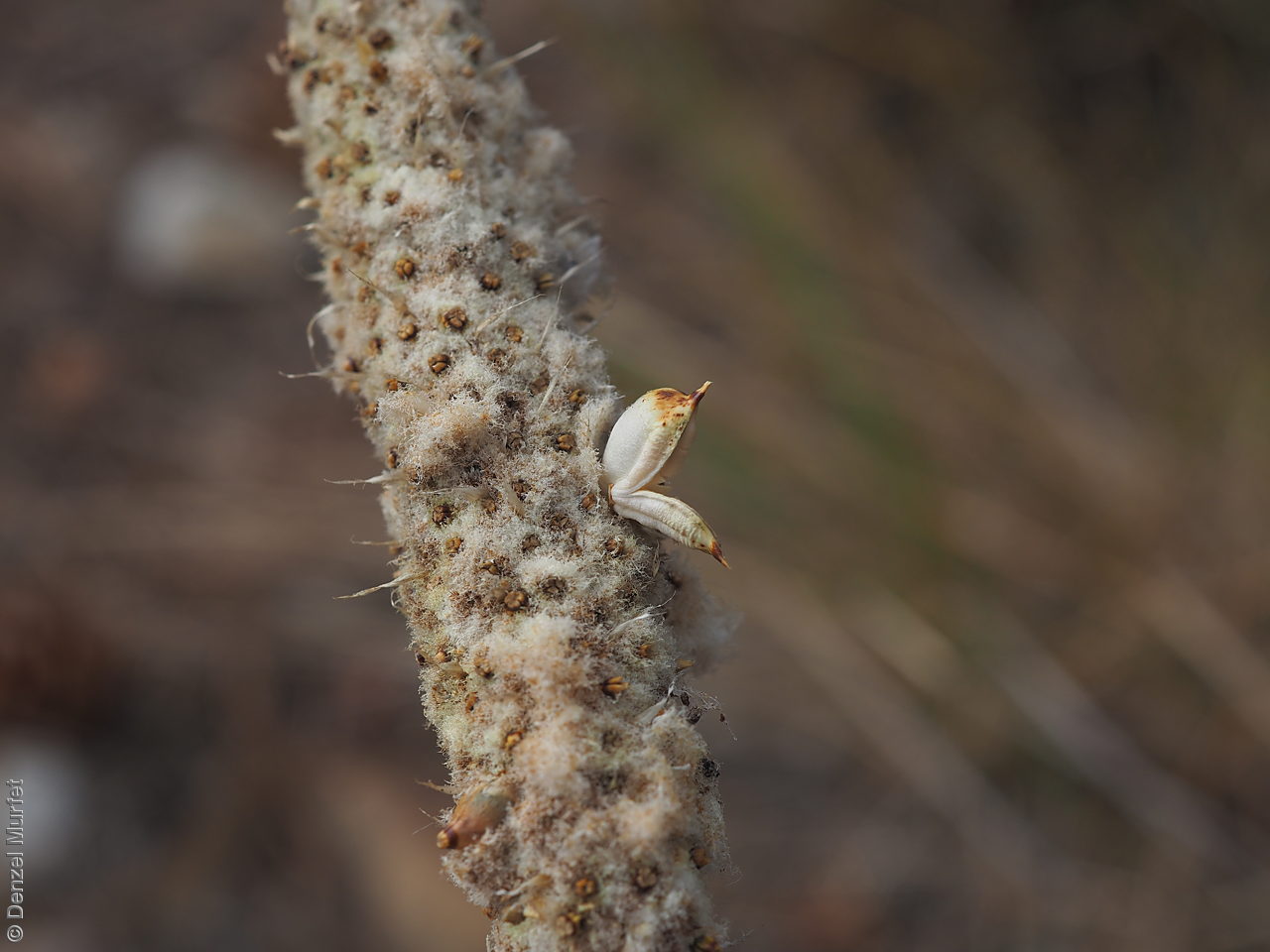

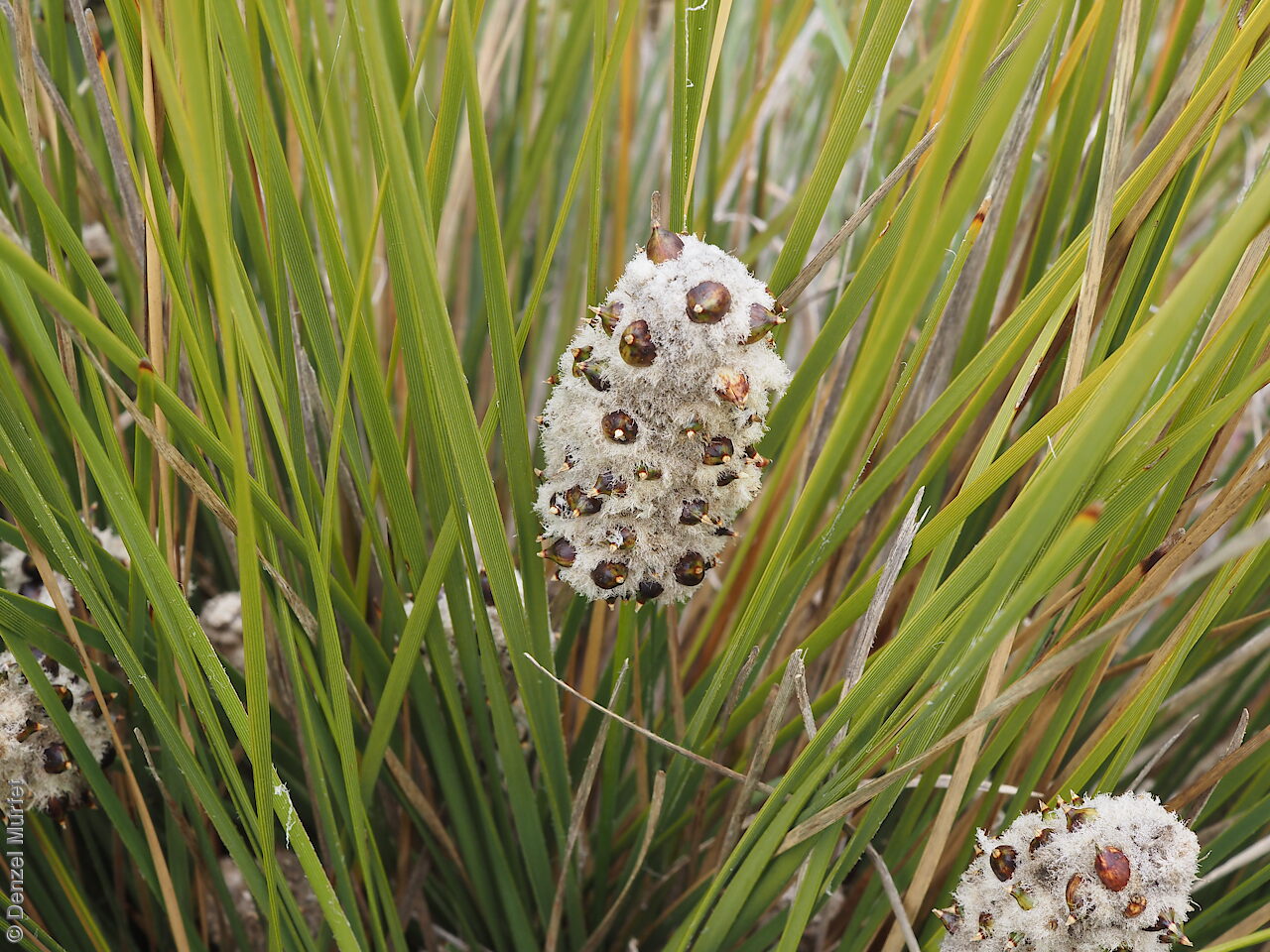





Botanical art
Common names
Woolly-head Mat-rush
Woolly Mat-rush
Etymology
Lomandra, from the Greek 'loma' meaning edge, border or fringe and 'andros', meaning a male, alluding to the circular margin of the anthers in some species. Leucocephala,from Greek meaning white head, alluding to the colour of the flower spike. Robusta, from Latin meaning well-developed or robust.
Distribution and status
Found in the southern part of South Australia, from the Nullarbor to the upper South-east, with scattered collections from the north-west, growing on upper slopes and crests of sand dunes and under mallee. Also found in all mainland States. Native. Common in South Australia. Common in the other States.
Herbarium regions: North Western, Lake Eyre, Nullarbor, Gairdner-Torrens, Eastern, Eyre Peninsula, Northern Lofty, Murray, Yorke Peninsula, Southern Lofty, South Eastern, Green Adelaide
AVH map: SA distribution map (external link)
Plant description
Robust iron-grass to 60 cm high. Leaves to 80 cm long and 4 mm wide; flat or somewhat channeled. Leaf sheath margins short, yellowish to orange-brown, the fragments few; woolly or fibrous. Flowers, sessile in dense ovoid heads or thick cylindrical spikes to 5 cm long and 2 cm thick, enclosing the straight rigid unbranched stem; head of spikes with a white-woolly appearance. Flowering between April and August. Fruits are ovoid to globular capsule. Seeds are brown, rounded wedge-shaped seed to 6 mm long and 4 mm wide. Seed embryo type is linear, underdeveloped.
Seed collection and propagation
Collect seeds between September and November. Collect mature fruits, turning brown with a hard seed inside, or when they are starting to split. Place the capsules in a tray and leave to dry for one to two weeks, then rub the capsules gently by hand to dislodge the seeds. Use a sieve to separate the unwanted material. Store the seeds with a desiccant such as dried silica beads or dry rice, in an air tight container in a cool and dry place. From one collection, the seed viability was high, at 100%. This species has morpho-physiological dormancy and can take several weeks to germinate.
| Location | No. of seeds (weight grams) | Number of plants | Date collected | Collection number Collection location | Date stored | % Viability | Storage temperature |
|---|---|---|---|---|---|---|---|
| BGA MSB | 1,590 (15.44 g) 1,590 (15.44 g) | 40 | 24-Nov-2006 | TST104 Murray | 1-Aug-2007 | 100% | -18°C |
| BGA | 6,900 (138.75 g) | 1-Jan-2014 | D131111MU Murray | 1-Nov-2017 | -18°C | ||
| BGA | 5,600 (113.55 g) | 1-Jan-2014 | D121211MU Murray | 1-Nov-2017 | -18°C | ||
| BGA | 2,200 (45.768 g) | 13-Jul-2005 | Glenelg Golf Course Southern Lofty | 7-Jul-2022 | 100% | -18°C |
Number of plants: This is the number of plants from which the seeds were collected.
Collection location: The Herbarium of South Australia's region name.
% Viability: Percentage of filled healthy seeds determined by a cut test or x-ray.